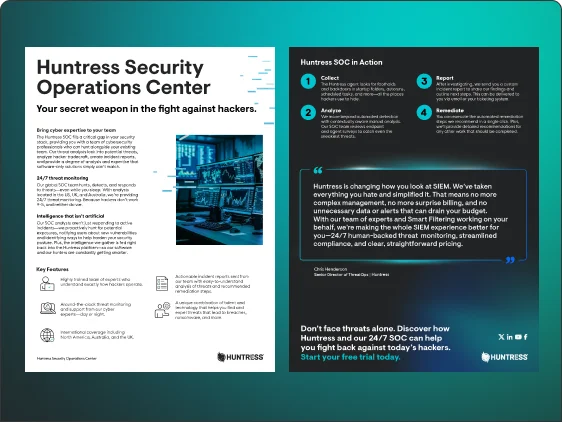Security operations might sound like an enterprise luxury, but small and midsized organizations are just as likely to get hit hard constantly by ransomware, business email compromise, or living‑off‑the‑land attacks.
Many organizations run with lean teams that juggle IT support, compliance, and security responsibilities all at once. This guide is built for exactly those environments—giving IT and security pros the practical blueprints they need to spin up (or outsource) 24/7 monitoring, helping business leaders translate SOC jargon into budget lines and board‑level risk metrics, and satisfying curious staff who simply want to understand what happens inside that mysterious “operations center” once an alert fires.
Here’s what you’ll get:
- A clear view of SOC roles and responsibilities—i.e., analysts involved in security operations, threat hunting, or incident response—and how they work together.
- Cost‑benefit comparisons between building an in‑house SOC and tapping a provider to handle it.
- Battle‑tested selection criteria: coverage hours, response SLAs, threat‑intel depth, and reporting clarity.
- Actionable next steps—whether you’re starting from zero or leveling up a basic monitoring stack.
Our global SOC handles thousands of alerts daily across endpoints, identities, and cloud workloads. We’ve seen the pitfalls—alert floods, half‑configured SIEMs, and “set‑and‑forget” tools that never catch a real intrusion. We distilled that frontline know‑how into this guide so you can sidestep common mistakes and accelerate to a mature security posture.























